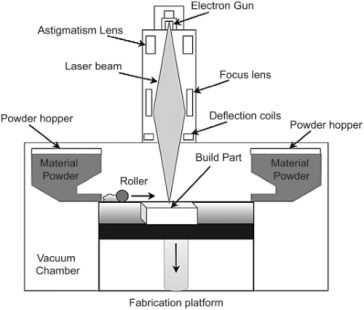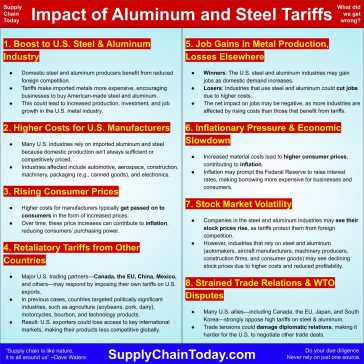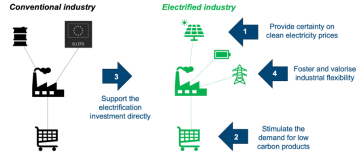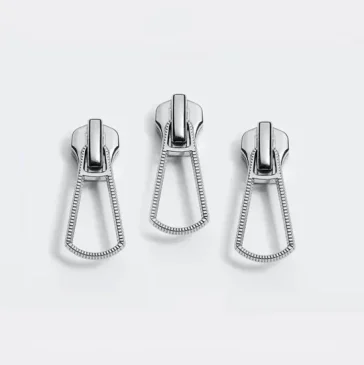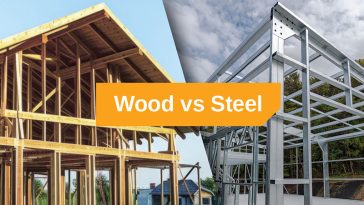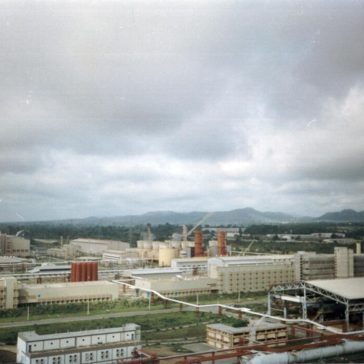More stories
-
Clean Iron Innovation Redefines Data Centre Construction
Clean Iron Technology: A Paradigm Shift in Data Centre Construction The global push toward sustainability has reached the very core of industrial manufacturing. With our world rapidly digitalizing, data centres are emerging as key nodes for modern infrastructure. Yet, beneath the impressive rows of servers lies a surprising secret—the massive amounts of steel that power […] More
-
Uncovering the Reasons Behind Algoma Steel Group Astl Stock Surge
Breaking Down Premium Membership Models in Investment Research The investment world is full of twists and turns, and one of the key challenges for today’s investors is figuring out which tools and memberships can help make sense of tricky parts of stock analysis and market research. In our current landscape, premium membership models offered by […] More
-
Businesses Unfazed as Trump Halts Trade Talks Over Ad Campaign
Trade Talks on the Edge: Analyzing the Impact of Political Ads on International Negotiations The recent announcement by U.S. President Donald Trump, halting trade discussions with Canada over a controversial ad campaign, has set off a wave of reactions in both political and business circles. In this opinion piece, we take a closer look at […] More
-
European Council Advances Competitiveness and Twin Transition for a Prosperous Future
Digital Red Tape and Its Effects on Modern Business In today’s fast-paced digital age, even a brief moment of delay can feel like an insurmountable hurdle. We’ve all encountered situations where a website presents a message such as “Checking your browser before accessing a GSC Managed Website” or “Waiting for www.consilium.europa.eu to respond…” Such messages […] More
-
Elmet Site Ushers In A New Era Of High Performance Refractory Metal Powders
Introducing the New Digital Frontier for Refractory Metal Powders The recent launch of Elmet Technologies’ fully optimised website marks a turning point in the way manufacturers, researchers, and end-users are approaching refractory metal powders. With an emphasis on high-performance materials, the platform is designed to help industry professionals figure a path through the tangled issues […] More
-
Abigail Ross Hopper Opens a New Chapter in US Solar Leadership
Abigail Ross Hopper’s Departure: A Defining Moment for the US Solar Industry The announcement that Abigail Ross Hopper will step down as president and CEO of the Solar Energy Industries Association (SEIA) has sparked considerable discussion in the renewable energy community. Hopper’s nearly nine-year tenure at the helm of the nation’s leading trade organization for […] More
-
Trending Hot
Steel Industry Leaders Call for Bold Strategy Against US Tariffs
Securing the Digital Frontier: The Importance of Connection Verification for Business Websites In today’s online business landscape, ensuring a safe and secure connection isn’t just a technical necessity but a critical element to building trust with visitors. Many websites, ranging from small local businesses to large industrial manufacturing companies, rely on advanced security systems like […] More
-
EU Leaders Embrace New Industrial Support Measures for Future Growth
EU Climate Policy and Industry Support: A Balancing Act for 2040 The European Union is setting its sight on a bold climate target for 2040. In anticipation of a formal agreement at the upcoming summit, top EU leaders are discussing measures that could ease the transition for energy-intensive industries such as steel, automotive, and manufacturing. […] More
-
Revolutionizing Crown Prediction with Advanced SpatioTemporal CBAM Insights
Is Your Browser Holding Your Business Back? In today’s fast-paced digital landscape, even something as seemingly mundane as an outdated browser can have a noticeable impact on your business. Whether you run a small business, manage an industrial manufacturing operation, or work in the automotive or electric vehicle sectors, using outdated technology may be preventing […] More
-
Industry Leaders Celebrate Ambassador Greers Global Vision for Manufacturing Excellence
Global Steel Overcapacity: A Collective Call for Change The debate over global steel overcapacity has been a topic loaded with problems and heated discussions for years. Recently, Ambassador Jamieson Greer’s virtual address at the Global Forum on Steel Excess Capacity’s Ministerial Meeting sparked renewed dialogue on how to figure a path out of this tangled […] More
-
YIBI Emerges as Forerunner in China Custom Stainless Steel Bag Hardware Industry
Redefining the Landscape: Small Business and Industrial Manufacturing in a Changing Economy In today’s fast-evolving economic environment, small businesses and industrial manufacturers face a blend of opportunities and hurdles. Many business leaders in these sectors are trying to figure a path through a maze of tricky parts, tangled issues, and complex regulatory landscapes. From shaping […] More
-
Wood reinvented challenges steel in the battle for innovative construction
Reinventing an Age-Old Material: Superwood and the Future of Construction The world of construction and manufacturing is experiencing a remarkable transformation, as innovative breakthroughs are challenging the old guard. Among these, a product called Superwood stands out as a game changer. Born from over a decade of persistent research and backed by a hefty $20 […] More
-
Hot
Carbon Costs Threaten European Growth According to Chemical Leaders
Europe’s Chemical Industry Faces a Tough Road with Rising Carbon Prices The ever-increasing cost of carbon allowances in Europe is creating significant challenges for the continent’s chemical makers – a development that has ignited a heated debate about the balance between environmental goals and industrial survival. Leading companies, including giants like BASF and SKW Stickstoffwerke […] More
-
Europe Takes Center Stage in the Global Steel Tariff Battle
Transforming the Business Landscape: A 2023 Opinion on Changing Dynamics The modern world of business is in constant flux as new technologies, shifting regulatory environments, and evolving consumer expectations continue to alter the way companies work. In 2023, small businesses and industrial manufacturing alike are facing a myriad of challenges—from updating traditional automotive practices to […] More
-
New Horizons Beckon for Ajaokuta Steel
Understanding the Role of Cookies in Today’s Digital Landscape In today’s online environment, the use of digital cookies is a subject that sparks both curiosity and concern among business owners, marketers, and everyday internet users. With websites increasingly relying on cookies for essential functions, personalization, and advertising performance measurement, it can be a nerve-racking challenge […] More
-
Warsaw Paves Future for Borynia CokingCoal Site with Rights Extended to 2042
Extending the Life of the Borynia Coking-Coal Site: A Strategic Decision in Uncertain Times The Polish government’s decision to extend operations at the Borynia coking-coal site until 2042 marks an essential turning point for the region’s energy and industrial sectors. After decades of serving as a cornerstone for local employment and providing hard coal to […] More



